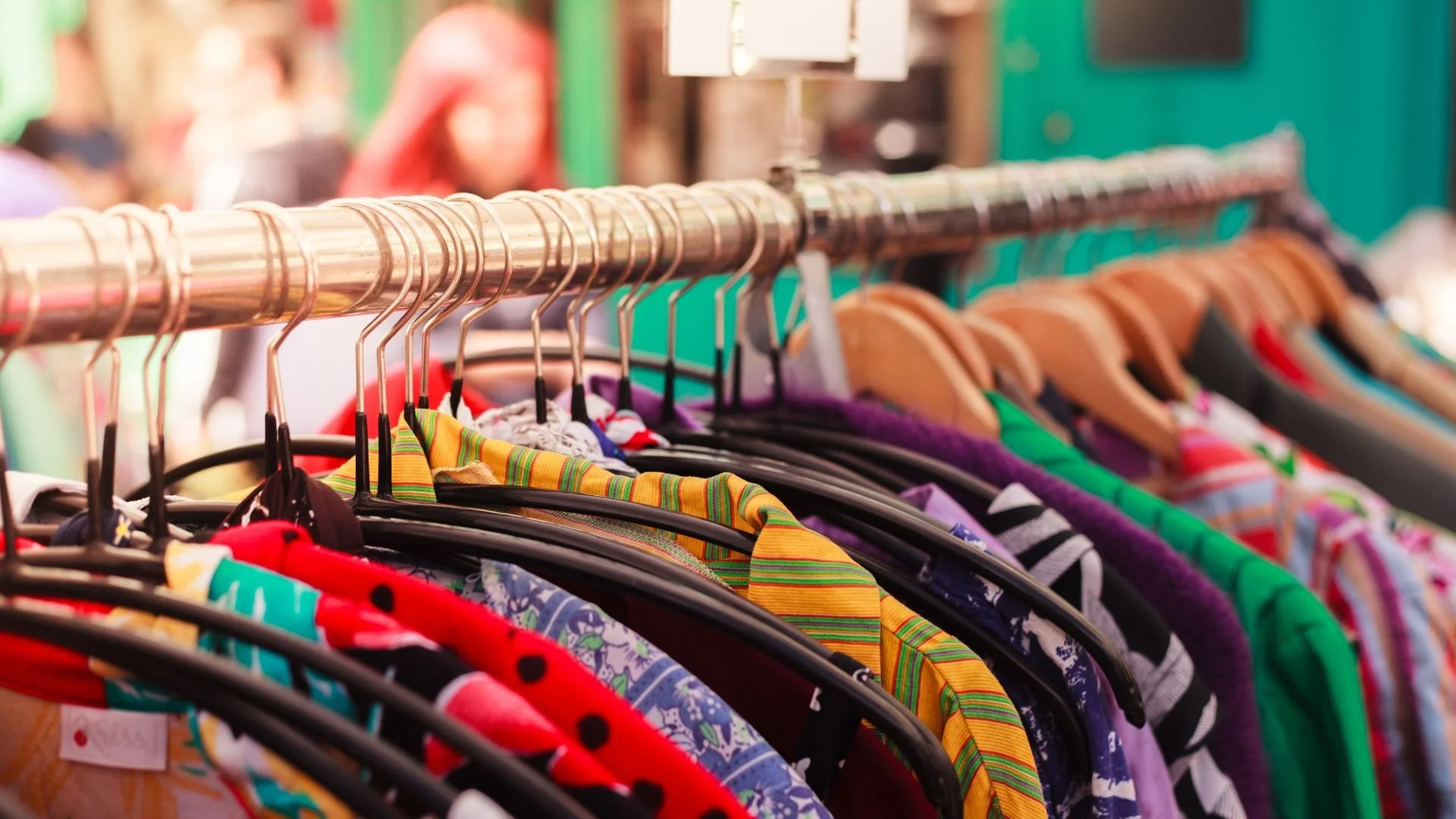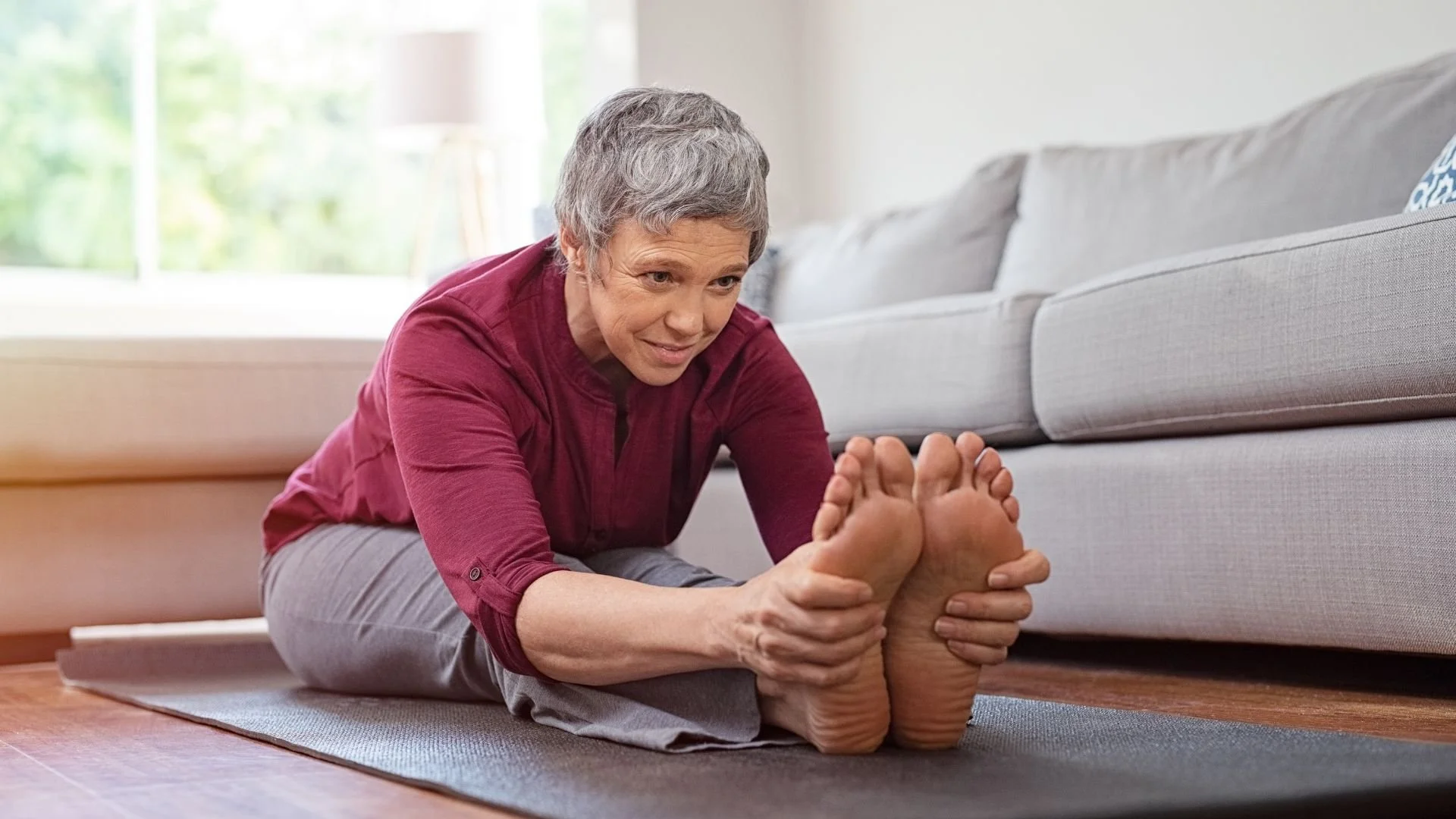10 Reasons Why You Have Nothing to Wear
Have you ever stood in front of your closet, packed with clothes, and felt like you had absolutely nothing to wear?
You’re not alone!
This dilemma is surprisingly common, especially among us ladies over 50 who’ve seen trends come and go and have closets full to prove it.
Let’s break down the top ten reasons why you might feel this way and how you can tackle them!
This post may contain affiliate links. Please see my full disclosure for more information.
1. Your Clothes Don’t Fit the Current Season
Sometimes, our closets aren’t organized for the season.
Maybe heavy sweaters are front and center in June, or a sundress is in plain sight in December.
Having those clothes to weed through every time you go to look for an item for the current season leads to visual clutter and closet fatigue.
Pro Tip: Rotate your wardrobe seasonally. This not only saves space but also makes it easier to see all your current options.
2. Too Many Trends, Not Enough Classics
Diving into a closet filled with trends can be like opening a time capsule—each piece reminds you of a momentary fashion high, but these pieces often don’t have the staying power you need for everyday styling.
Trends, while exciting when they’re at the peak of their popularity, can quickly feel outdated as the fashion seasons turn. The thrill of wearing something that is en vogue can diminish when it no longer aligns with the current style narratives promoted by fashion leaders and influencers. This results in a closet full of clothes that don’t excite you or, worse, make you feel like you’re behind the times.
Pro Tip: This is where the classics come into play. Classic pieces are the backbone of a versatile and enduring wardrobe. Investing in timeless basics—like a crisply tailored white shirt, sleek tailored pants, and a simple, elegant skirt—can transform your wardrobe dynamics.
These staples not only outlive the fleeting trends but also serve as a blank canvas for your personal style to shine. They allow you to integrate trendier items in a balanced way, ensuring that your outfit always feels current yet sophisticated. For instance, pairing a classic blazer with a trendy crop top can create a harmonious blend of contemporary and timeless, keeping your look grounded yet stylish.
3. Clothes That Don’t Fit Properly
As time passes, our bodies naturally change, and so does the way our clothes fit. It’s not just about clothes being too tight or too loose—often, the fit issues can be as subtle as needing a hem adjustment or letting out a seam for a little extra room.
Whether it’s pants that have become too short or a jacket that feels snug across the shoulders, these small discrepancies can make a big difference in how comfortable and confident you feel in your outfit.
Pro Tip: The key to keeping your wardrobe functional and flattering is to adapt your clothes to your current body shape. A skilled tailor can be your best ally here, capable of adjusting hemlines, altering waistbands, or modifying seams to ensure each piece fits perfectly.
This could mean shortening the length of a dress to suit your height better, taking in a blouse for a more flattering fit, or even letting out the sides of a skirt to provide a more comfortable fit.
If alterations aren’t enough to salvage a beloved item, consider donating it and replacing it with something that fits the wonderful you now. Remember, the goal is to have a wardrobe that makes you feel fabulous daily.
4. Unclear Personal Style
If your wardrobe feels like a mixed-up jumble of clothes that don't quite go together, it might be time to step back and figure out your personal style.
Pro Tip: Spend some time defining your personal style. Are you drawn to the timeless elegance of classic looks, the carefree allure of bohemian styles, or perhaps a blend of several aesthetics?
Understanding your personal style preferences is crucial because it guides your future shopping decisions, ensuring that you purchase items that harmonize with your wardrobe and enhance your overall style.
This clarity not only makes getting dressed easier but also helps you shop more intentionally, avoiding impulse buys that don’t truly fit your style narrative.
5. You’re Holding onto the Past
Holding onto clothing for sentimental reasons or as a reminder of a thinner past can clutter your closet and your mind, preventing you from embracing who you are today.
Whether it’s the dress from a special occasion long past or a pair of jeans that no longer fits, these garments take up valuable space and can often bring about feelings of nostalgia or regret that hinder your style progress.
Pro Tip: The key to a functional and joyful wardrobe is to ensure that every piece you own makes you feel great about yourself as you are now. If an item doesn’t uplift you or serve your current lifestyle, it might be time to let it go.
This approach not only frees up closet space but also boosts your self-confidence, as your wardrobe will only contain items that fit well and flatter your current shape, reflecting the best version of you.
6. Lack of Versatile Pieces
A common wardrobe pitfall is having an abundance of statement pieces without enough versatile basics to balance them out. This can make it challenging to create a variety of outfits, as these standout items often overshadow simpler garments and aren’t easily paired with other bold pieces.
Additionally, a mistake many make is purchasing outfits—complete sets of clothing intended to be worn together—rather than separates that can be mixed and matched. While outfits might provide a quick dressing solution, they lack flexibility; once you’ve worn the set, it’s less appealing to repeat without significant variation.
Pro Tip: To enhance the functionality of your wardrobe, focus on acquiring staples that serve as the foundation for countless looks. Versatile pieces, especially in neutral colors like black, white, beige, and gray, can seamlessly integrate with louder, more vibrant clothing, helping to tone them down or tie disparate elements together. Items like a well-fitting pair of jeans, a classic blazer, or a simple t-shirt are indispensable because they can be dressed up or down, contributing to a wide range of outfits from casual to formal.
Investing in these basics allows you to maximize the use of every item in your closet, including those eye-catching statement pieces, by giving you the freedom to create fresh and varied ensembles every day.
7. Impulse Buys Gone Wrong
Impulse purchases are a familiar tale for many of us, where an item catches our eye in the moment but ends up as a regrettable buy. Often, these whimsical acquisitions fail to integrate with our existing wardrobe, resulting in rarely worn pieces that clutter our closet space.
This mismatch typically stems from buying on the spur of the moment without considering the item’s compatibility with our other clothes.
Pro Tip: To avoid this pitfall, a useful strategy is to pause before making a purchase and visualize at least three outfits using the item with what you already own.
This simple rule of thumb ensures that every new addition is versatile and complements your existing wardrobe, thereby increasing the likelihood of it being worn regularly and becoming a valued part of your style rotation. Such thoughtful shopping not only curbs wasteful spending but also helps in cultivating a more cohesive and functional wardrobe.
8. Everything Feels Outdated
The rapid pace of fashion can make even recent purchases feel outdated as trends evolve from season to season. This cycle can leave you with a closet full of items that seem passé, creating a sense of dissatisfaction with your wardrobe.
Pro Tip: The solution to this dilemma lies in focusing on classic cuts and timeless fits less susceptible to the whims of fashion. Pieces like a tailored blazer, a crisp white shirt, or a simple black dress withstand the test of time and serve as the backbone of a versatile and stylish wardrobe. By investing in these staples, you can avoid the trap of trend-chasing and ensure that your wardrobe remains relevant and chic, regardless of the current fashion climate. This approach not only enhances the longevity of your wardrobe but also allows you to confidently mix these classics with a few trendy pieces to keep your style updated without becoming a slave to fast-changing fashion fads.
9. Your Lifestyle Has Changed
Lifestyle changes, such as retirement or shifting to a work-from-home environment, often necessitate a reassessment of your wardrobe. Clothes that once suited a daily commute or an office setting might not feel appropriate for more casual, home-based activities.
When your wardrobe fails to align with your current lifestyle, it can create a sense of having nothing suitable to wear. This mismatch can be particularly striking if your clothing options continue to reflect a more formal, structured environment rather than the comfort and flexibility required at home.
Pro Tip: To remedy this, it’s important to take stock of how you spend your days and what clothing will serve you best now. Adding comfortable yet chic pieces—like soft knitwear, relaxed trousers, and versatile tunics—can drastically improve your daily wardrobe functionality, making sure you feel both comfortable and stylish in your new day-to-day life.
By updating your wardrobe to reflect your current lifestyle, you not only optimize your clothing choices but also enhance your overall satisfaction with your wardrobe.
10. Overwhelmed by Clutter
Too much choice can be as bad as not enough. A cluttered closet can significantly hinder your ability to dress effectively and enjoyably. When you have too many options or keep items that no longer serve your style or lifestyle, it can be overwhelming and make it difficult to locate or even remember what you own. This excess can lead to a paradox where, despite a full wardrobe, you find yourself repeatedly feeling like you have nothing to wear. The clutter not only obscures your view of potentially great outfits but also adds unnecessary stress to your daily routine.
Pro Tip: To combat this, adopting the one-year rule is highly effective: if an item hasn’t been worn in the past year, it’s a strong candidate for donation or resale. This method helps streamline your wardrobe, focusing on keeping only those pieces that are useful, fit well, and make you feel confident. Decluttering not only simplifies your choices but also revitalizes your relationship with your wardrobe, making each piece more visible and accessible.
By understanding these common closet pitfalls, you can take steps to ensure your wardrobe works for you, not against you. Remember, the goal is to curate a closet that feels just right for your life now.















Seasonal closet swaps don’t need to be a big project. This post shows a simple, category-based way to store off-season pieces, keep a small transitional lineup out, and reset your closet fast, so getting dressed stays easy and polished over 50.